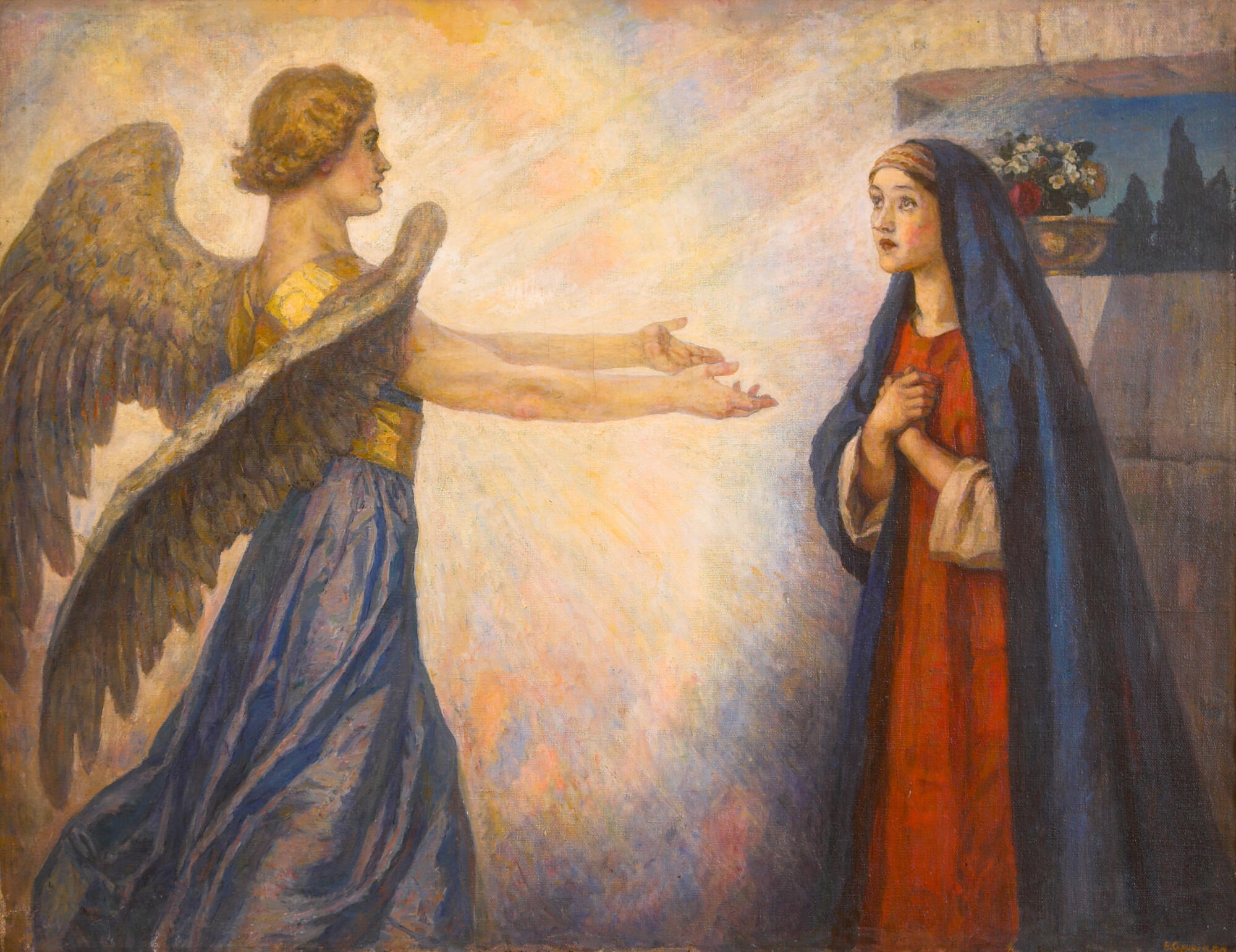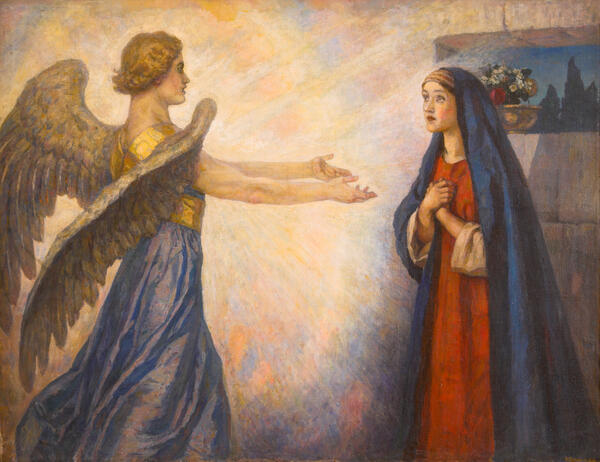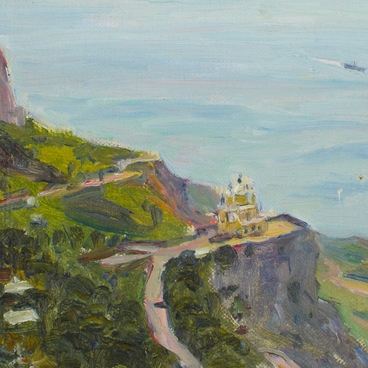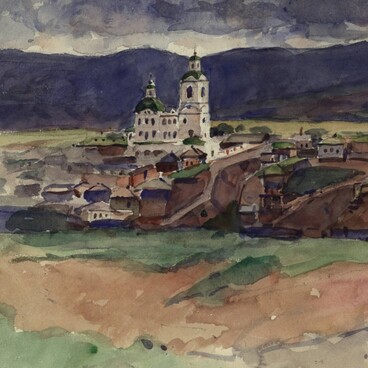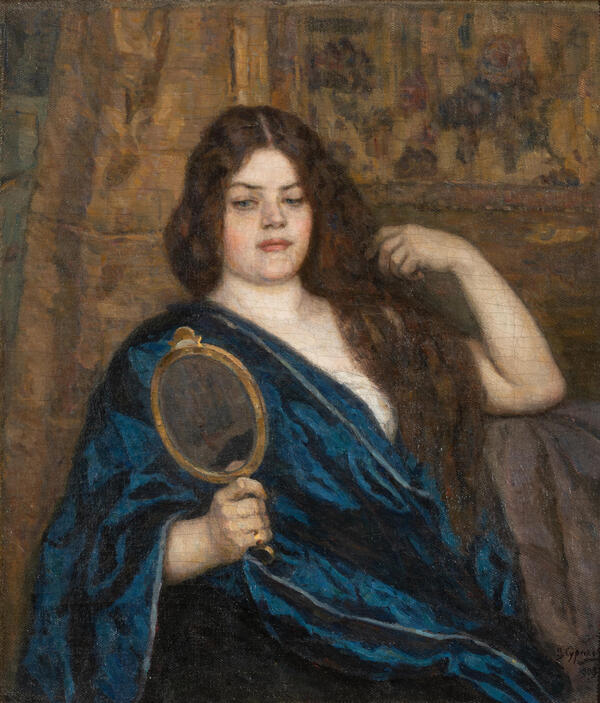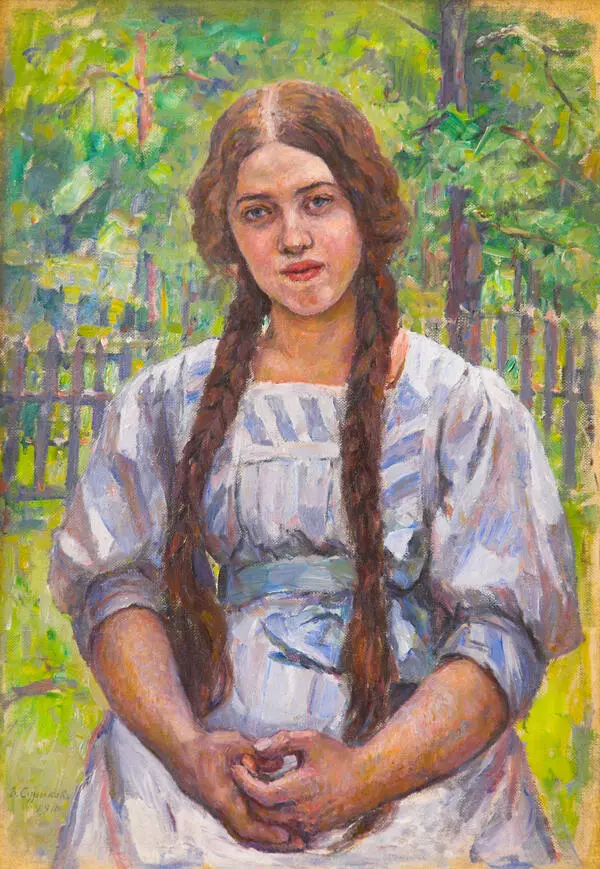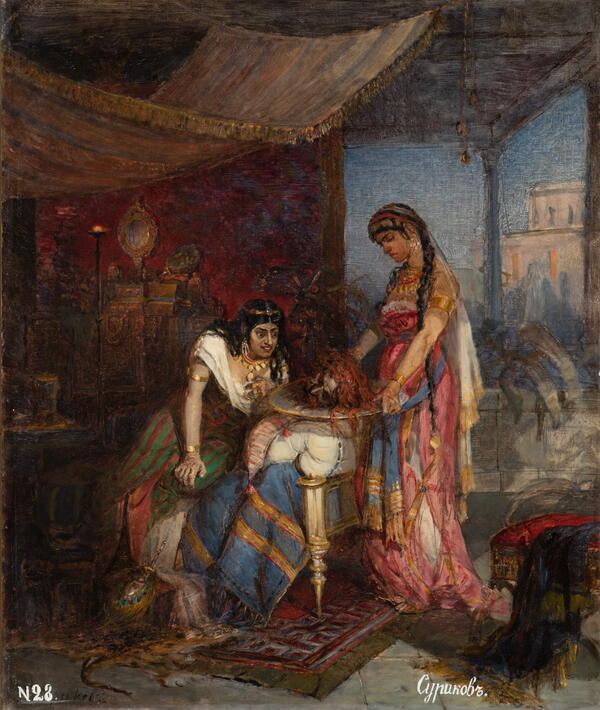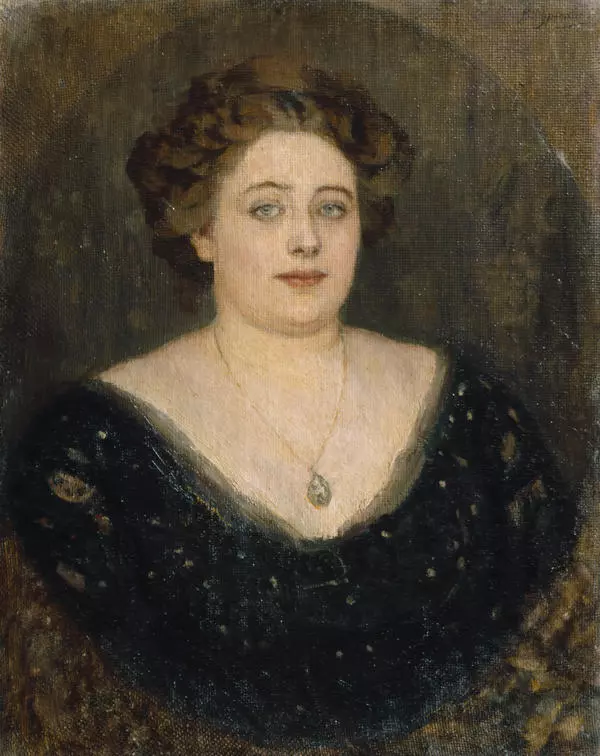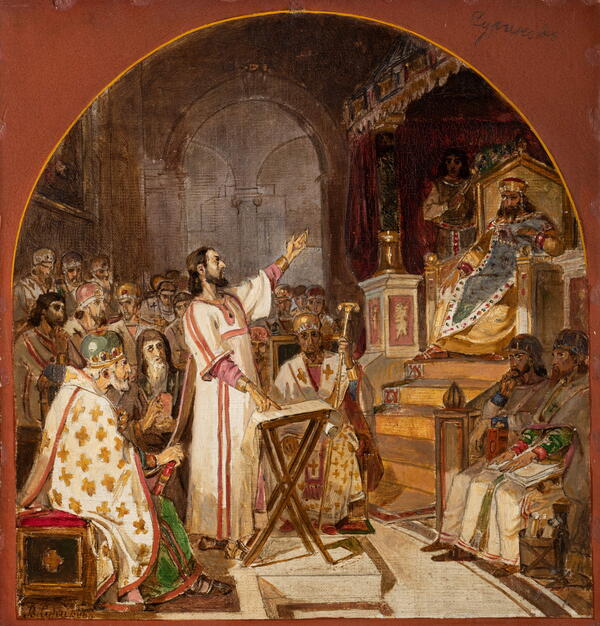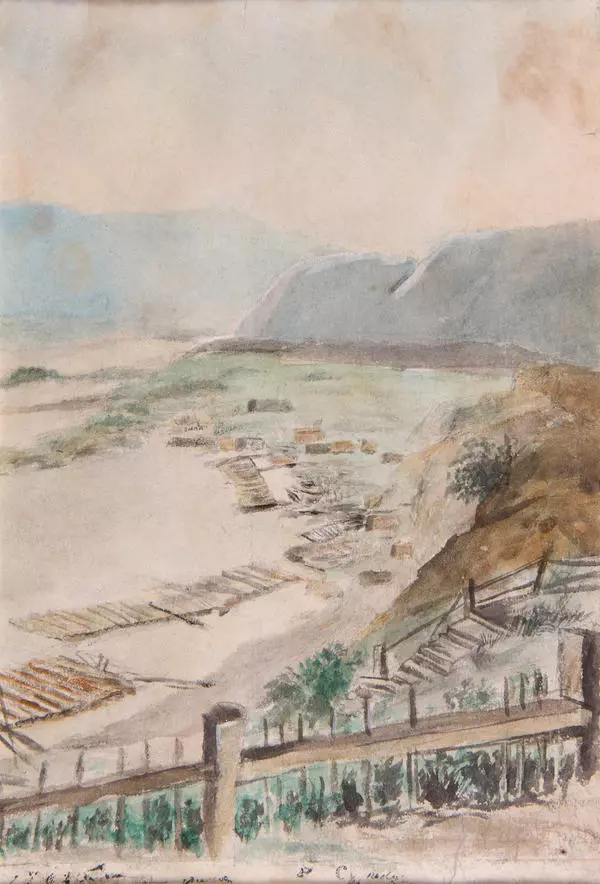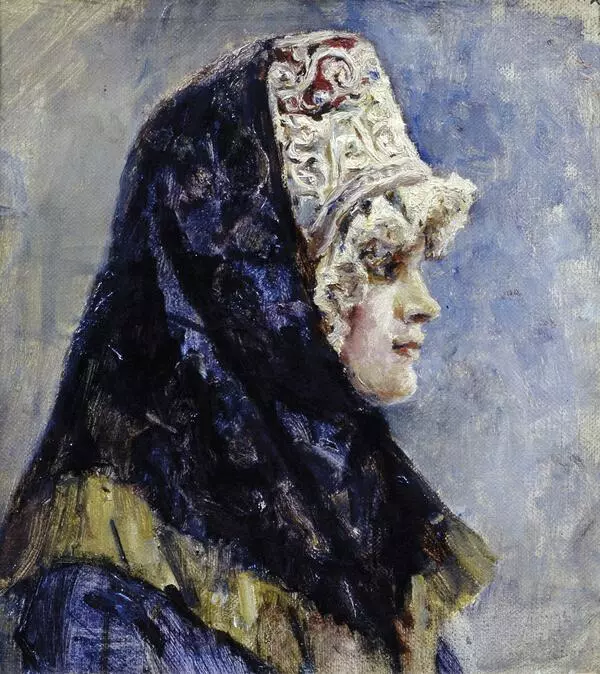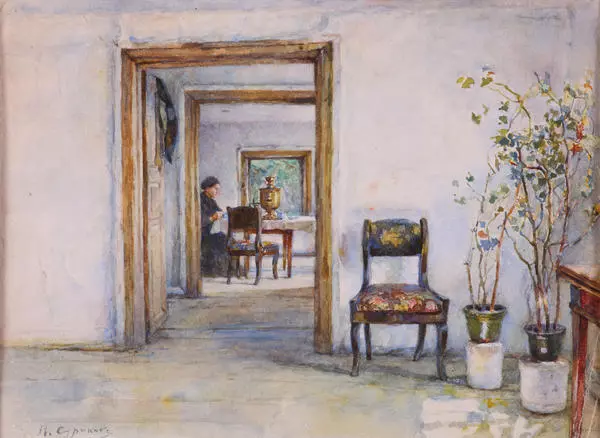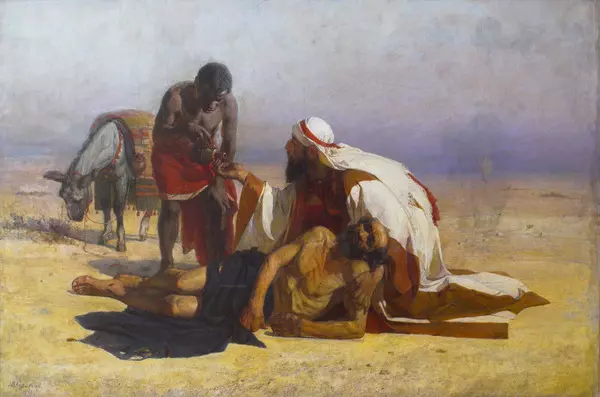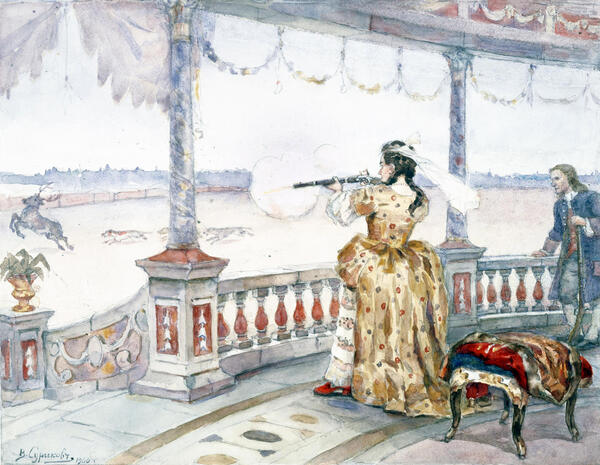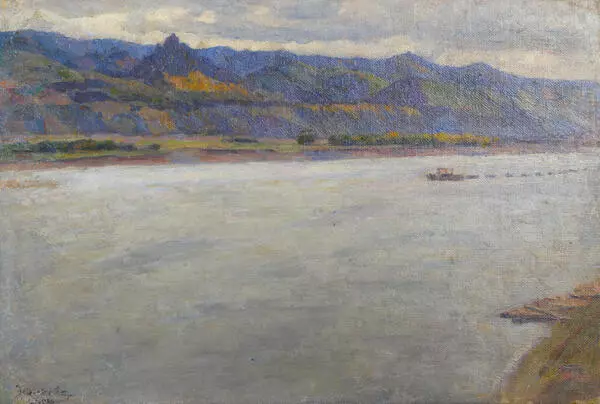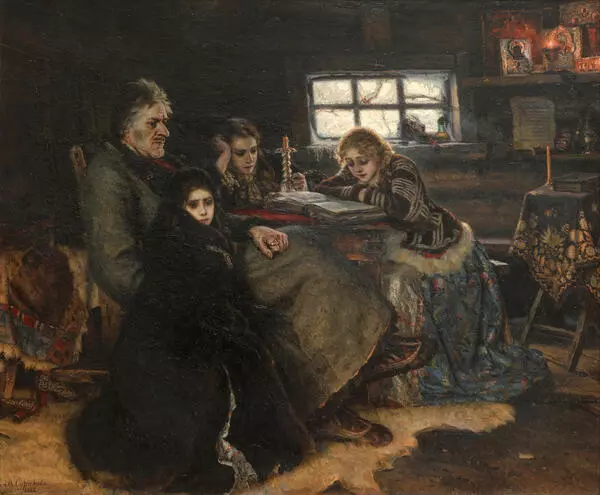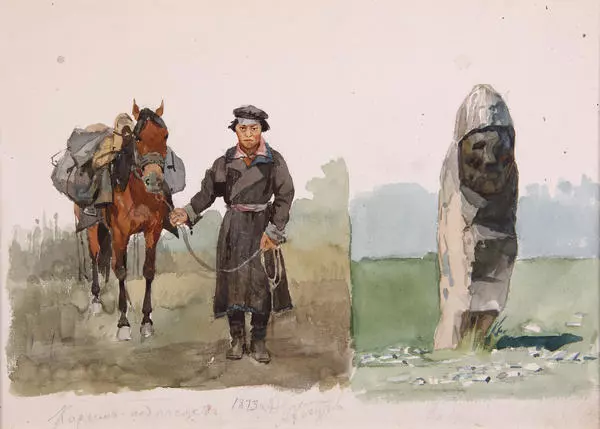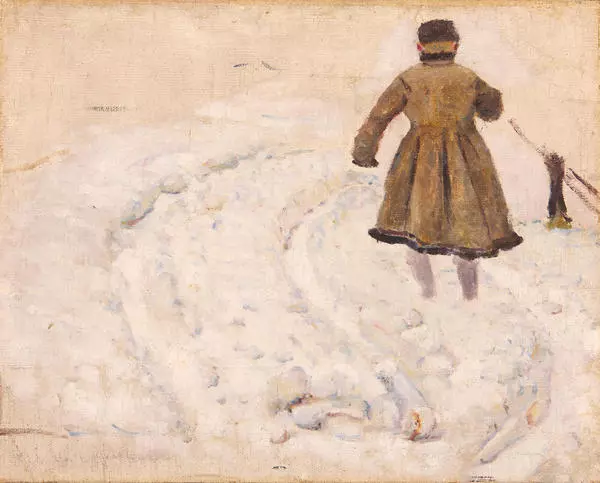Vasily Surikov presented an Annunciation at the 12th Exhibition of the Russian Artists' Union. The picture had no real success, colleagues and critics responded negatively about it. Researchers attribute this response to the fact that viewers at that time were accustomed to perceiving the artist as a renowned historical painter with grandiose canvases and loud story lines. Surikov took away the canvas from the exhibition, and for many years, it was kept folded. Later it was kept in the artist’s family, and in 1988 Krasnoyarsk Art Museum named after V.I. Surikov bought it from the grandson of the painter Mikhail Konchalovsky.
At the very beginning of his career, even before entering the Academy of Arts, Surikov already turned to the subject of the Annunciation. Then the drawing teacher Nikolai Grebnev brought him an engraving by Vladimir Borovikovsky, and the eleven-year-old boy diligently copied it. Later, Surikov spoke warmly of these copies: “They were wonderful drawings… After all, how these folds are delicately made here. And the handle. I really liked this pen, it”s so exquisitely made”. After 48 years, the artist returned to the gospel story.
His interpretation of the plot of the Annunciation is out of the blue and has nothing to do with the teaching of the church. The realist painter did without the usual details such as Lily, Spindle, and Bible in the hands of the Virgin Mary to depict Annunciation. He also refused the blessing gesture of the Archangel and his worship of Mary Vasily Surikov made the interior as simplistic as possible, and enlarged the figures of Archangel Gabriel and Mary, and brought them closer to the audience. The robe of the Blessed Virgin is painted in a free and wide manner, her lively and trusting face is turned to the Archangel, who radiates a powerful stream of light, bringing her the good news of the birth of her son, Jesus Christ.
The Annunciation is the last major work completed by Vasily Surikov. In 1914 the artist returned to Krasnoyarsk, where he painted several watercolors and landscapes “Plashcoat on the Yenisei”, “Krasnoyarsk in the area of the Annunciation Church”. The next year, Surikov went to Crimea for medical treatment.
The painter passed away in March 1916. He died in Moscow from heart disease. Feeling the approach of death, the artist uttered his last words: “I am fading”.
At the very beginning of his career, even before entering the Academy of Arts, Surikov already turned to the subject of the Annunciation. Then the drawing teacher Nikolai Grebnev brought him an engraving by Vladimir Borovikovsky, and the eleven-year-old boy diligently copied it. Later, Surikov spoke warmly of these copies: “They were wonderful drawings… After all, how these folds are delicately made here. And the handle. I really liked this pen, it”s so exquisitely made”. After 48 years, the artist returned to the gospel story.
His interpretation of the plot of the Annunciation is out of the blue and has nothing to do with the teaching of the church. The realist painter did without the usual details such as Lily, Spindle, and Bible in the hands of the Virgin Mary to depict Annunciation. He also refused the blessing gesture of the Archangel and his worship of Mary Vasily Surikov made the interior as simplistic as possible, and enlarged the figures of Archangel Gabriel and Mary, and brought them closer to the audience. The robe of the Blessed Virgin is painted in a free and wide manner, her lively and trusting face is turned to the Archangel, who radiates a powerful stream of light, bringing her the good news of the birth of her son, Jesus Christ.
The Annunciation is the last major work completed by Vasily Surikov. In 1914 the artist returned to Krasnoyarsk, where he painted several watercolors and landscapes “Plashcoat on the Yenisei”, “Krasnoyarsk in the area of the Annunciation Church”. The next year, Surikov went to Crimea for medical treatment.
The painter passed away in March 1916. He died in Moscow from heart disease. Feeling the approach of death, the artist uttered his last words: “I am fading”.
